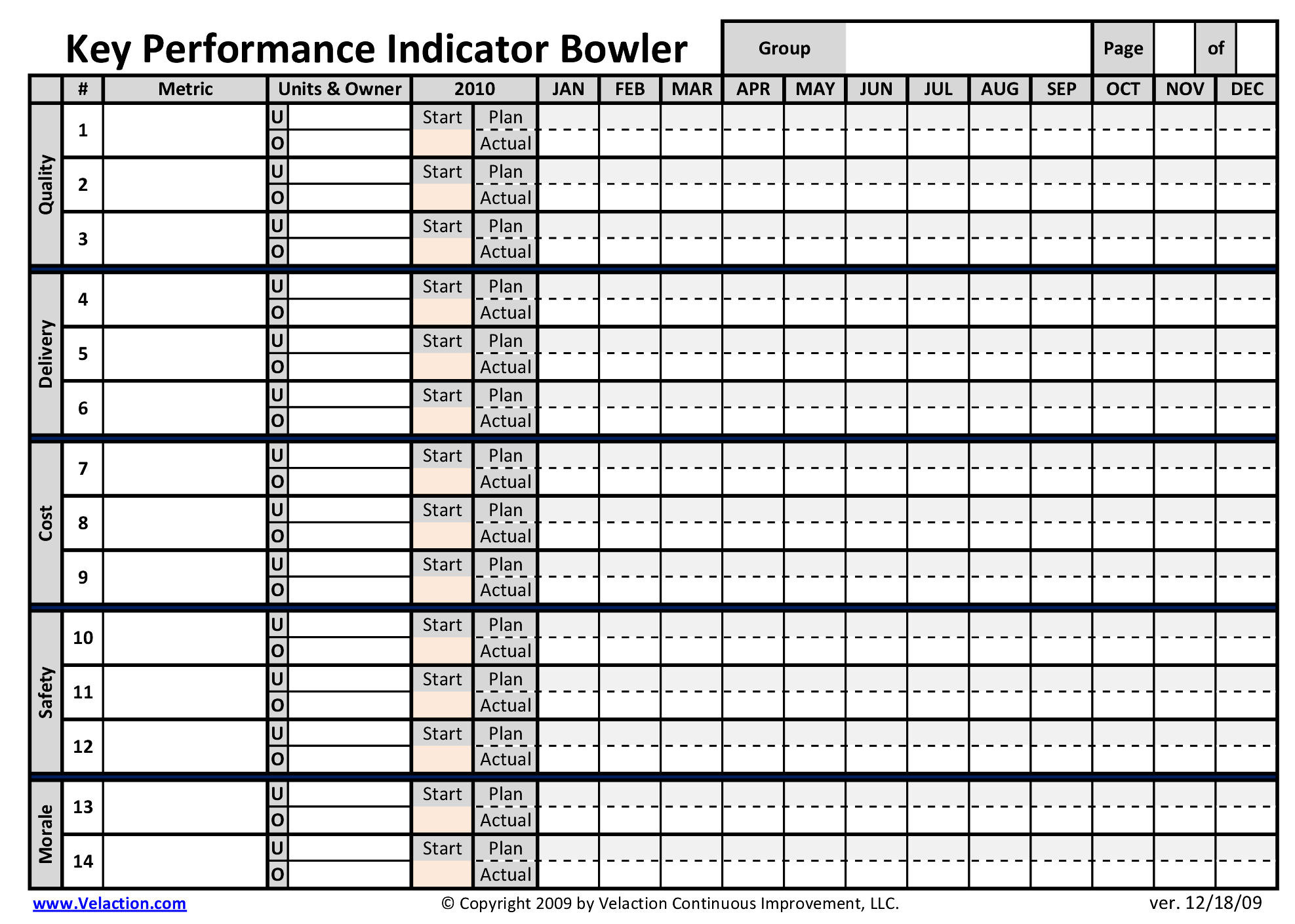Key Performance Indicator
KPI stands for key performance indicator. KPIs are the specific, quantifiable measures by which an organization evaluates its success.
KPIs come from two main sources. The first is that they can cascade down from policy deployment and are linked to an improvement target. In that situation, a key performance indicator is the little slice of a strategy that a subordinate organization must accomplish if the company is to meet its overall goals.
For example, a company may set a goal to grow the business. That goal may cascade down to a shipping area in the form of a specific lead time or quality key performance indicator.
The other form of KPIs are those that are linked to a critical, ongoing aspect of the business that may not be specifically related to strategic goals. In some cases, the target line will be flat, indicating a minimum or maximum threshold you cannot cross (think safety or quality limits). But more often than not, these KPIs should drive improvement.
These KPIs may be similar to the ones derived from policy deployment, but they account for local requirements in work areas rather than the area’s role in the big picture. These local KPIs also deal with problems. Sometimes, a work area struggles, and a KPI is put in place to get it back on track.

Key Performance Indicators Characteristics
- Key performance indicators must be measurable. If you can’t figure out where you are, you can’t evaluate performance.
- Key performance indicators must be relevant. Make sure the key performance indicators matter. Don’t measure something that is not critical, or that is not an issue. It just wastes your time. Key performance indicators are not a “feel-good” tool. If you are always hitting the number by a lot, get rid of the key performance indicator.
- The key performance indicators should be meaningful. The key performance indicators should add up to successfully reaching company goals. Don’t just use a blanket percentage increase for a KPI. Resources are limited. Make sure you are using them wisely.
- Key performance indicators should be actionable. Sales revenue is not generally a good key performance indicator. It is generally better to measure the tasks that raise sales—lead generation, customer contacts, sales calls, etc. That way a team can take specific actions to get the key performance indicators on track.
- Key performance indicators must be communicated. People should know what they are being measured on.
- Key performance indicators should measure the critical few things. Too many KPIs reduce focus.
- Teams act when they miss on their key performance indicators. If a team falls behind, it should be doing countermeasures to get back on track.
- Key performance indicators should be public (within the company). KPIs are generally recorded on some sort of chart and posted in the work area.



0 Comments